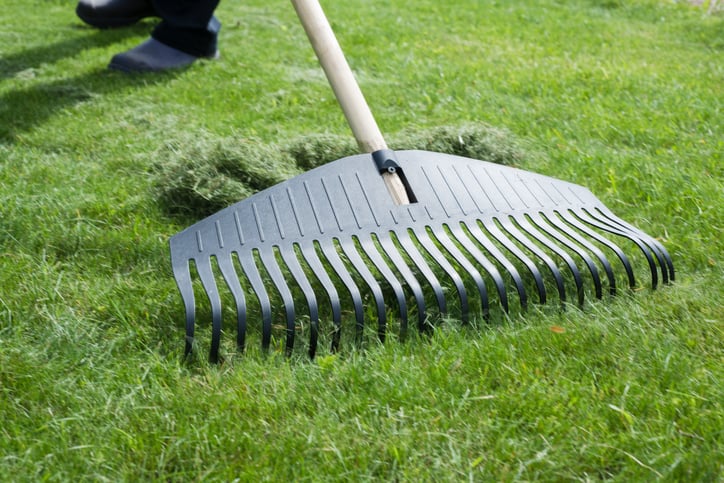If you’re hoping to decrease your risk of seeing snow mold, grass diseases, and other issues in your lawn this spring, break out the rake. Raking a matted lawn can be very important after an intense winter. Raking will help you decrease the chance of dead areas developing and encourage healthy growth for the upcoming summer.
Cool-season grasses go dormant in the winter by letting grass blades dehydrate. This makes them less susceptible to mold and other lawn diseases. Your grass blades will revive themselves naturally in the spring, even after months of heavy snow.
But things don’t always work out the way you want them to. So, as the weather warms and the snow cover melts away, here’s why gently raking in the spring is one of the most important steps you can take to prevent snow mold and ensure a healthy lawn.
The Piles Of Snow Are Gone—Now What?
Once the snow melts, you’re going to want to take a look around your yard. You’ll want to target the areas of your lawn that are brown and matted. That’s because it may be Brown Patch.
This disease is pretty common, no matter the weather. But Brown Patch Fungus can accentuate when the weather is cool and damp, most often when the snow is melting.
The patches will be straw-colored or even rust-colored, but make sure your lawn is still not dormant. The best time to begin raking is about mid-April when your grass begins to warm up and turn green again.
This will allow you to target areas of your lawn that may actually be diseased. Raking right after winter will be less targeted as most of the grass will still be brown, regardless of if it is dead or healthy. It can also help you identify one of the different types of snow mold that exist.
Why Raking Helps
Raking is an important part of your lawn care regimen because it removes all the debris and dead grass. Raking can cut down your snow mold chances and other diseases by improving air circulation and helping your lawn drain better. This keeps moisture from building up. Cool, wet soil is a breeding ground for fungus.
Raking can also help loosen any thatch layers you may have and get your lawn ready to be fertilized. You should apply fertilizers as needed. But if you test your soil, apply fertilizer according to instructions.
What If You Discover Snow Mold?
If you discover snow mold, if it’s not too severe, gently raking the affected areas should take care of it. But if the infestation is more severe, a lawn fungicide may need to be applied.
Look Out For Lawn Moss, Too
March is also the best time to treat lawn moss because early spring is when it is in the active growing phase. Moss isn’t like any other weed. If you wait too long to take care of it, it will become a constant battle, so you’re better off nipping it in the bud.
Get rid of a patch of moss using a spring-tine lawn rake. The trick is to rake at the moss from different angles to loosen and lift it. To collect and toss the moss into your compost bin or trash, rake at the moss from different angles to loosen and lift it.
Lush Lawn Can Help
If you want to ensure that your lawn starts healthy and thrives all summer long, Lush Lawn can help. We have several lawn care packages to fit any budget.
